Tanzania History Facts and Timeline
(Tanzania, TZ, East Africa)
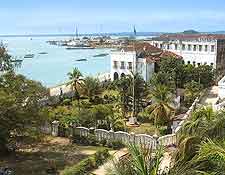
Situated on the coast of East Africa, Tanzania has only been in existence in its current form since 1964, when it gained independence following a long period of European colonial rule. However, it is one of the oldest inhabited regions on earth.
It is most famous for its breathtaking sights such as Mount Kilimanjaro and the Serengeti National Park, yet increasing numbers of tourists are taking an interest in the rich and colourful history of Tanzania.
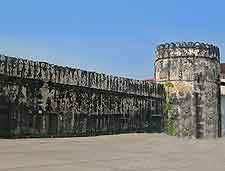
Its prehistory dates back more than two million years, evidenced by fossilised remains belonging to pre-human species.
Travellers interested in Tanzania's Stone Age history flock to the Isimila Gorge, where the ancient rock art is believed to date back 30,000 years. Some of the oldest evidence of Homo Sapien and its predecessor, Homo Erectus, has been found in the Great African Rift Valley at the Olduvai Gorge, within site of Mount Kilimanjaro.
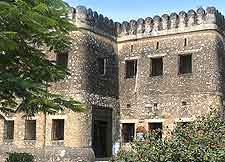
Early Cultures
Hunter-gatherer peoples, such as the Khoisan, inhabited the region for thousands of years, before the technologically-advanced Bantu arrived in great numbers. Traders from
India and the Persian Gulf also began coming to Tanzania from the first millennium AD, bringing Islam to the country's shores. As early as the 8th century AD, Islam was preached on the Swahili Coast.
The earliest Tanzania cultures were also renowned for their iron and steel forging abilities. Around 2,000 years ago, the Haya people produced an innovative blast-furnace which allowed them to manufacture carbon steel.
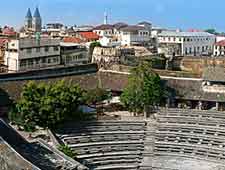
Kaole
The oldest Islamic ruins in Tanzania date back to a time between the 13th and 16th centuries. Visitors staying in the capital Dar es Salaam can make the short journey to the Kaole ruins, an archaeological site which is home to the oldest mosque in East Africa. It also hosts Chinese artefacts which evidence the ancient trade routes between Tanzania and the Far East.
Zanzibar
One of the earliest notable immigrants from the Middle East was the Sultan of Muscat and Oman, who claimed the coast as his own and set up the island of Zanzibar as a hub for the Arab slave trade. This is perhaps one of the saddest episodes in Tanzania history, since well over half of the Arab-Swahili population of Zanzibar became slaves.
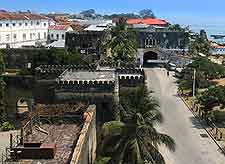
Modern-day visitors to Zanzibar can learn about the slave trade by visiting the former Slave Market and seeing its dungeon-like chambers. Zanzibar's main city, Stone Town, is now a UNESCO World Heritage Site, littered with ancient architecture such as the Old Fort, built by the Omani in the 17th century.
In 1964, the Sultan of Zanzibar was overthrown by local revolutionaries and the majority Arab government disbanded. The final death toll from this bloody coup is unknown, but it is widely believed that it could be as many as 20,000 people. The revolution was led by the Afro-Shirazi Party (ASP), which later based itself in the former sultan's residence, the House of Wonders. Nowadays, tourists can visit the House of Wonders and learn about Zanzibar and Swahili culture.
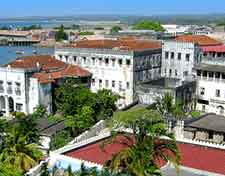
German Colonial Rule
Tanzania was conquered by Imperial Germany during the latter years of the 19th century, with the exception of Zanzibar, which remained under Arab control. The country was part of the wider German East Africa Empire, which also included Burundi and Rwanda. Tanzania came under increasing attention from Britain at this time, which had colonial ambitions of its own.
The Germans spent much of WWI engaged in guerrilla warfare against the British, led by General Paul Emil von-Lettow Vorbeck. Following the end of WWI, however, the League of Nations ceded many of the former German territories to the British. As such, the country became a British Mandate and the German role in the history of Tanzania came to a close.
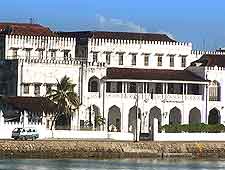
Independence Arrives
The transition to independence was a relatively smooth one for Tanzania, avoiding the bloodshed which affected some of its African neighbours. Julius Nyerere was a key figure in the fight for independence. He worked closely with the British and even became prime minister under a British administration in 1960. By 1961, British rule had ended and Tanganyika became an independent state, renaming itself.
Following the Zanzibar Revolution in 1963, Zanzibar merged with Tanganyika the following year to become the Tanzania that we know today. However, Zanzibar still remains a semi-autonomous authority. Tanzania's fight for independence is well-covered by the National Museum, located in the capital Dar es Salaam.
Over the years, the country has followed a path similar to other newly independent African former colonies, that is to say, stunted economic growth and slow development at the hands of disappointing governments and one-party state politics. Tourism certainly helps to boost the economy, while the 21st century has been one of growth so far, with the country realigning itself with the investment of
China rather than the political doctrine.
 Situated on the coast of East Africa, Tanzania has only been in existence in its current form since 1964, when it gained independence following a long period of European colonial rule. However, it is one of the oldest inhabited regions on earth.
Situated on the coast of East Africa, Tanzania has only been in existence in its current form since 1964, when it gained independence following a long period of European colonial rule. However, it is one of the oldest inhabited regions on earth. Its prehistory dates back more than two million years, evidenced by fossilised remains belonging to pre-human species.
Its prehistory dates back more than two million years, evidenced by fossilised remains belonging to pre-human species.

 Modern-day visitors to Zanzibar can learn about the slave trade by visiting the former Slave Market and seeing its dungeon-like chambers. Zanzibar's main city, Stone Town, is now a UNESCO World Heritage Site, littered with ancient architecture such as the Old Fort, built by the Omani in the 17th century.
Modern-day visitors to Zanzibar can learn about the slave trade by visiting the former Slave Market and seeing its dungeon-like chambers. Zanzibar's main city, Stone Town, is now a UNESCO World Heritage Site, littered with ancient architecture such as the Old Fort, built by the Omani in the 17th century.
